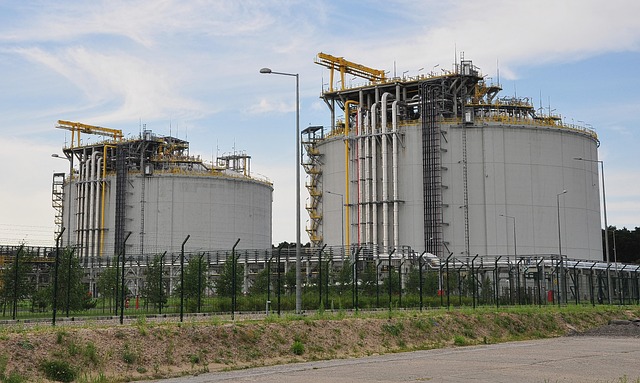Portable toilets: Mobile sanitation guardians in modern society
Portable toilets have become essential infrastructure elements across countless industries and events, providing critical sanitation services where traditional plumbing systems are unavailable or impractical. These mobile sanitation units serve millions of people daily at construction sites, outdoor festivals, emergency situations, and remote locations. From basic single-unit structures to sophisticated trailer-mounted facilities with running water and climate control, portable toilets have evolved significantly since their inception. Understanding their development, functionality, and diverse applications reveals how these seemingly simple structures play a vital role in maintaining public health standards and supporting modern society's mobility and flexibility needs.

Modern portable toilets represent decades of engineering innovation designed to address sanitation challenges in temporary and remote locations. These self-contained units have transformed from basic outdoor necessities into sophisticated sanitation solutions that support everything from major sporting events to disaster relief operations.
The emergence and development of portable toilets
The concept of portable sanitation dates back to ancient civilizations, but modern portable toilets emerged in the 1940s when shipyard workers needed temporary facilities during World War II. Harvey Heather is often credited with creating the first modern portable toilet in the early 1960s, using fiberglass construction that made units lighter and more durable than previous wooden structures.
The industry experienced rapid growth during the 1970s and 1980s as construction booms and outdoor events increased demand for temporary sanitation. Technological advances introduced chemical treatments that controlled odors and broke down waste more effectively, while improved ventilation systems enhanced user comfort. The introduction of polyethylene construction in the 1990s further revolutionized the industry by creating more hygienic, easier-to-clean surfaces.
How portable toilets work
Portable toilets operate on a simple yet effective waste containment system that requires no external plumbing or electrical connections. The basic unit consists of a waste holding tank, toilet seat, urinal, and ventilation system housed within a lightweight but sturdy shell.
Waste falls directly into a holding tank containing chemical deodorizers and waste-breaking agents. These chemicals serve multiple functions: controlling odors, reducing bacterial growth, and beginning the decomposition process. The ventilation system, typically a simple vent pipe extending through the roof, creates airflow that helps control odors and maintains air quality inside the unit.
Regular maintenance involves pumping out waste tanks, refilling chemical supplies, and cleaning all surfaces. Most rental companies service units weekly for standard applications, though high-traffic locations may require more frequent attention. The waste is transported to approved treatment facilities where it undergoes proper processing according to environmental regulations.
Diverse types of portable toilets
The portable toilet industry offers numerous specialized units designed for different applications and user requirements. Standard units provide basic functionality with a toilet seat, urinal, and hand sanitizer dispenser, making them suitable for construction sites and general outdoor events.
Deluxe models include additional amenities such as interior lighting, ventilation fans, mirrors, and larger waste tanks for extended use periods. These units often feature foot-operated hand washing stations and paper towel dispensers for improved hygiene.
Accessible units comply with Americans with Disabilities Act requirements, featuring wider doors, interior grab bars, and wheelchair-accessible layouts. These specialized units ensure that temporary facilities meet the same accessibility standards as permanent restrooms.
Trailer-mounted facilities represent the premium category, offering multiple stalls, running water, climate control, and sometimes even music systems. These units are popular for weddings, corporate events, and other occasions where user comfort is a priority.
Advantages of portable toilets
Portable toilets offer numerous benefits that make them indispensable for temporary and remote applications. Their primary advantage lies in providing sanitation access where traditional plumbing infrastructure is unavailable, impractical, or prohibitively expensive to install.
Cost-effectiveness represents another significant advantage, particularly for short-term projects or events. Installing temporary plumbing connections would cost thousands of dollars and require extensive permits, while portable toilet rental provides immediate access at a fraction of the cost.
Flexibility allows organizers to position units strategically based on crowd flow, accessibility requirements, and logistical considerations. Units can be relocated as needed throughout an event or project timeline, optimizing convenience for users.
Environmental benefits include reduced water consumption compared to traditional flush toilets and proper waste containment that prevents groundwater contamination. Modern chemical treatments are increasingly eco-friendly, with some companies offering completely biodegradable options.
| Service Provider | Basic Unit Cost | Deluxe Unit Cost | Accessible Unit Cost |
|---|---|---|---|
| United Site Services | $200-300/month | $350-450/month | $300-400/month |
| CALLAHEAD | $150-250/month | $300-400/month | $275-375/month |
| Honey Bucket | $175-275/month | $325-425/month | $285-385/month |
| Port-O-Let | $160-260/month | $310-410/month | $280-380/month |
Prices, rates, or cost estimates mentioned in this article are based on the latest available information but may change over time. Independent research is advised before making financial decisions.
The future development of portable toilets
Technological advancement continues driving innovation in portable toilet design and functionality. Smart technology integration includes sensors that monitor waste levels and chemical supplies, enabling more efficient servicing schedules and reducing maintenance costs.
Sustainability initiatives are pushing the industry toward more environmentally friendly solutions. Solar-powered ventilation and lighting systems reduce energy consumption, while biodegradable chemicals minimize environmental impact. Some manufacturers are experimenting with composting systems that eliminate the need for chemical treatments entirely.
User experience improvements focus on enhanced comfort and hygiene features. Touchless operation systems, improved ventilation designs, and antimicrobial surface treatments address user concerns while reducing maintenance requirements.
The integration of portable toilets with broader event management systems allows real-time monitoring of usage patterns, helping organizers optimize placement and servicing schedules. This data-driven approach improves efficiency while ensuring adequate capacity during peak usage periods.
Portable toilets have evolved from simple necessity items into sophisticated sanitation solutions that support modern society’s increasing mobility and outdoor activity preferences. Their continued development reflects ongoing commitment to improving public health infrastructure while addressing environmental concerns and user comfort expectations.




